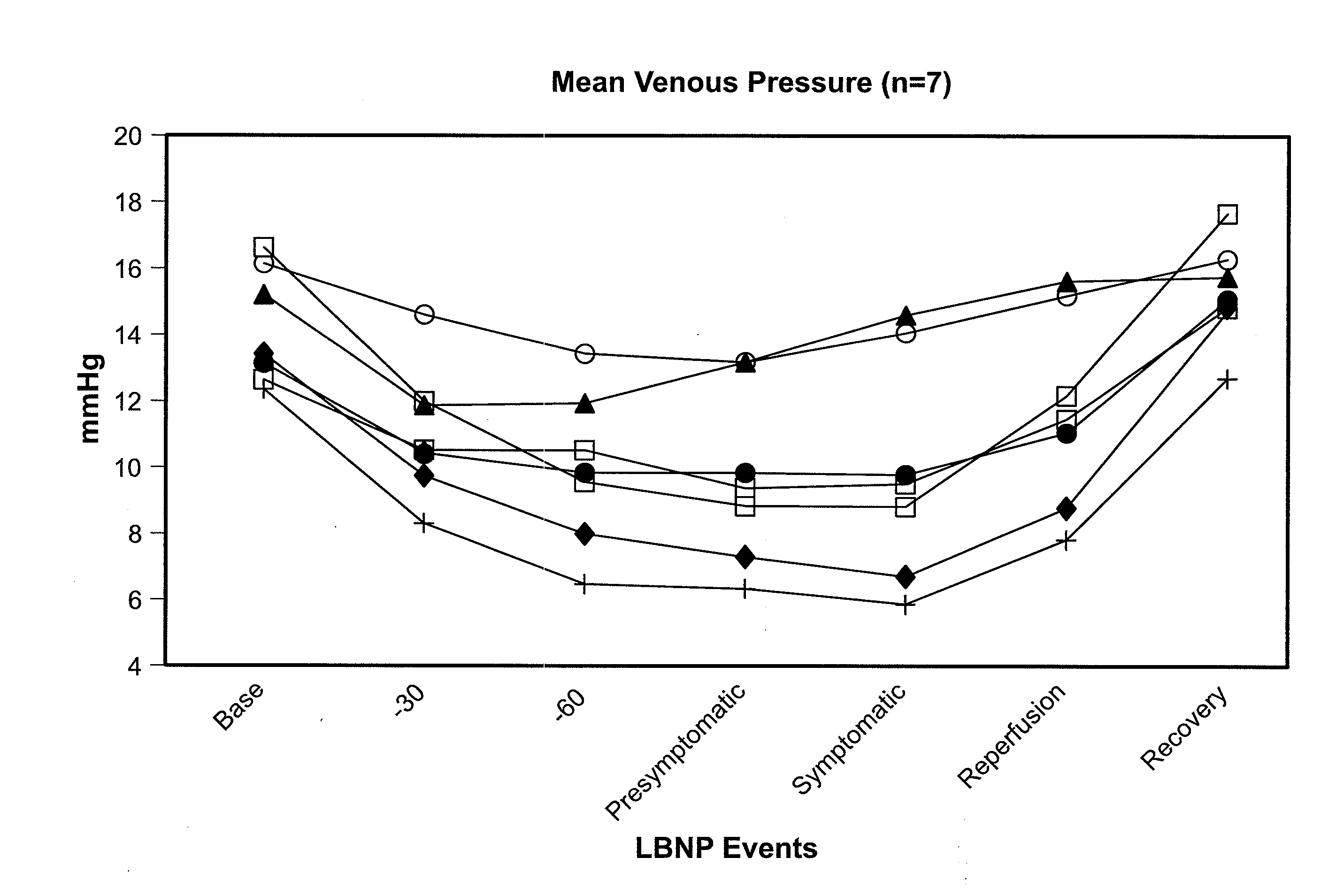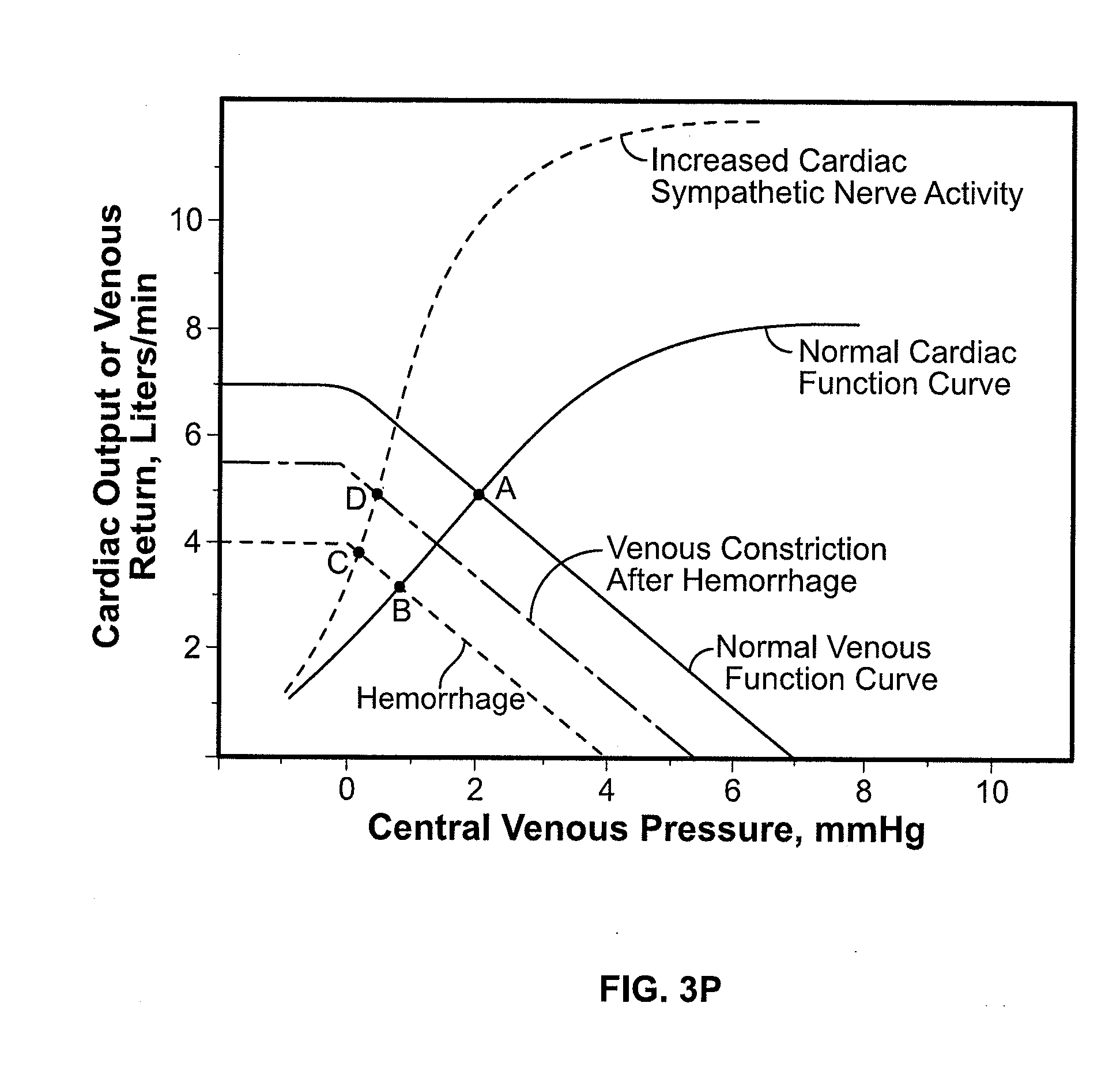Volume Status Monitor: Peripheral Venous Pressure, Hypervolemia and Coherence Analysis
a volume status monitor and hypervolemia technology, applied in the field of flow waveform analysis, can solve the problems of poor correlation between hemodynamic and echocardiographic index of left ventricular performance, unacceptably frequent complications of invasive monitors of volume status, and unacceptable complications, and achieve the effect of reducing blood volum
- Summary
- Abstract
- Description
- Claims
- Application Information
AI Technical Summary
Benefits of technology
Problems solved by technology
Method used
Image
Examples
Embodiment Construction
)
[0063]According to the present disclosure, advantageous systems and methods are provided for analyzing waveforms of the peripheral vasculature, e.g., peripheral venous pressure (PVP) a plethysmographic (PG) signal, etc. Advantageously, such waveforms may be used to detect changes in blood volume (e.g., a PG signal may be used to detect and distinguish between hypovolemia and hypervolemia as later provided herein). In particular, the present systems and methods relate to analyzing ventilation-induced variation (VIV, also referred to as respiration-induced variation) of waveforms in the peripheral vasculature. Thus, in exemplary embodiments, such as involving spontaneous breathing, it may be necessary to account for changes in respiratory signal strength. Specifically, coherence between ventilation and VIV for a flow or pressure waveform may be determined using spectral-domain analysis as later described herein. Indeed, mediation of respiration-induced variations in the spectral-doma...
PUM
 Login to View More
Login to View More Abstract
Description
Claims
Application Information
 Login to View More
Login to View More - R&D
- Intellectual Property
- Life Sciences
- Materials
- Tech Scout
- Unparalleled Data Quality
- Higher Quality Content
- 60% Fewer Hallucinations
Browse by: Latest US Patents, China's latest patents, Technical Efficacy Thesaurus, Application Domain, Technology Topic, Popular Technical Reports.
© 2025 PatSnap. All rights reserved.Legal|Privacy policy|Modern Slavery Act Transparency Statement|Sitemap|About US| Contact US: help@patsnap.com



